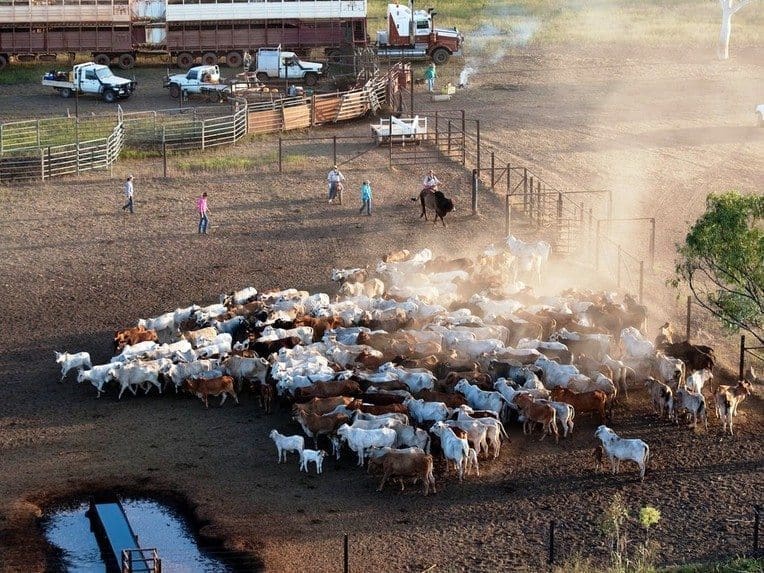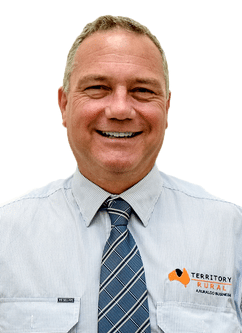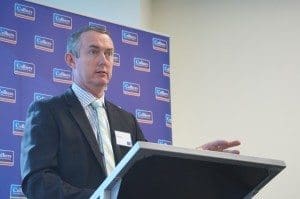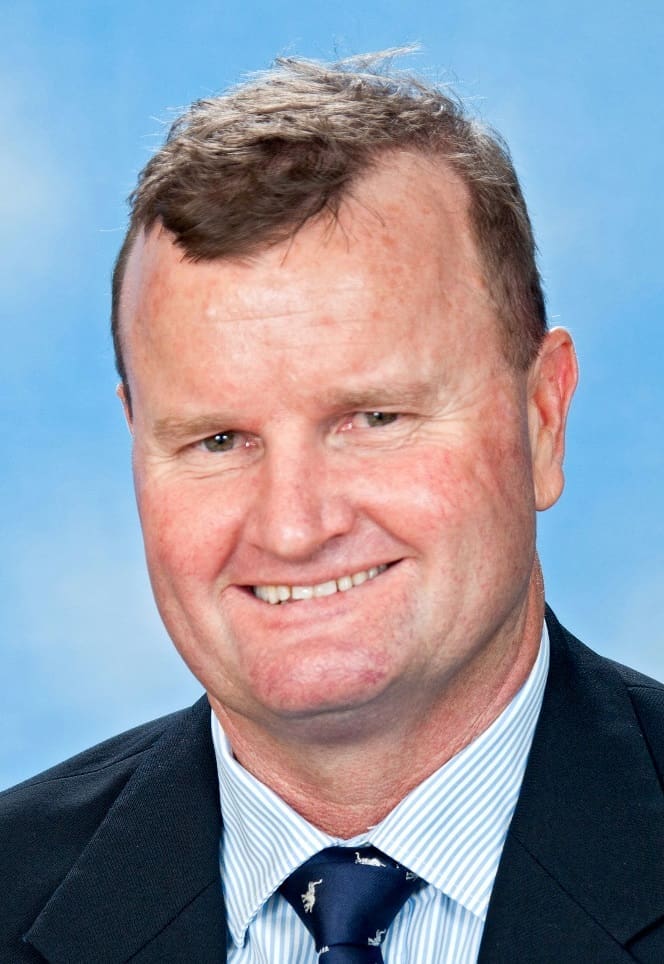
Mustering cattle on Kalala Station, near Daly Waters
In this second part of our Weekly Property Review scrutiny of the northern Australian property market, agents offer their views as to why the Top End market has been particularly slow this year. Click here to view last week’s part-one article…
The Northern Territory grazing property market is in ‘pause’ mode for the timebeing, rather than necessarily coming off last year’s highs, industry contacts have suggested to Property Central.
As mentioned in last week’s installment in this two-part report, more than five million hectares of pastoral land is being marketed in the NT at present – but it has been a slow year so far on the sales front, with only three stations changing hands in 2018.
Live export industry fortunes and the season, especially in the eastern half of the NT, have been put forward as contributing factors.

Andy Gray
Darwin-based Andy Gray from Ruralco Property Territory Rural is a knowledgeable property industry consultant with a career spanning more than 30 years in the region.
He admitted it was difficult to explain why some pastoral properties sold more quickly than others recently.
“The pool of buyers is smaller the higher in price you go, but there does seem to be an appetite for certain properties – size and scale – from certain sectors of the market.”
Mr Gray said there was no rhyme or reason why some top end holdings were taking longer to sell than others.
“There are examples properties selling very quickly off-market, and others that are taking their time. I can’t put my finger on it to be honest.”
Geoff Warriner from CBRE’s Agribusiness Transactions team said it was not unusual for some deals to take a longer time to conclude.
“Transactions on large northern properties do take time and now the NT property market has peaked, buyers are wary,” he said.
Consolidated Pastoral Co sale impact

Colliers’ Rawdon Briggs
Head of rural and agribusiness and transaction services at Colliers International, Rawdon Briggs, believes the live export trade and drier weather are influencing the northern cattle property market’s performance at present.
“I don’t see any storm clouds on the horizon. It’s just a pause for now – that’s my view of the market. Once the Consolidated Pastoral Co’s portfolio has sold, we’re likely to see a significant cascade of transactions. A premium portfolio of that size in the market creates a level of distraction,” Mr Briggs said.
Australia’s largest privately-owned cattle company was listed for public sale in March, in compliance with the Federal Government’s new FIRB requirements.
The portfolio spanning more than 5.5 million hectares in Western Australia, the Northern Territory and Queensland, comprises 16 cattle stations running more than 400,000 head of cattle.
The holdings include:
- 3069ha finishing property Allawah, Biloela QLD
- 72,022ha finishing property Argyle Downs, Kununurra WA
- 414,200ha breeding property Auvergne Station, Katherine NT
- 178,800ha breeding and fattening Bunda, Western VRD, NT
- 475,709ha breeding and finishing Carlton Hill, Kunuurra WA
- 23,159ha finishing Comely, Moura QLD
- 445,400ha breeding property Dungowan, Katherine NT
- 246,057ha stud & commercial breeding & growing Isis Downs, Isisford QLD
- 230,400ha breeding property Kirkimbie, VRD NT
- 379,130ha breeding property Manbulloo, Katherine NT
- 79,970ha growing Mimong, Julia Creek QLD
- 1,033,101ha breeding property Newcastle Waters, West Barkly NT
- 246,700ha breeding property Newry, Kununurra WA
- 852,306ha growing and finishing property Nockatunga, Thargomindah QLD
- 245,500ha breeding property Ucharonidge, Tennant Creek NT
- 596,880ha breeding property Wrotham Park, Chillagoe QLD
Mr Briggs believes the sale of CPC will be a litmus test for northern Australian property demand and values.
“There will be some interesting numbers coming out of the sale. It will give the 2018 northern beef market a rudder. Will it inject confidence into the property market? Absolutely,” he said.
Both Geoff Warriner and valuer, Frank Peacocke from Herron Todd White agree that bigger investors are sitting back waiting to see what happens with the sale.
“Trophy properties like the 10,331sq km Newcastle Waters or the 2455sq km Ucharonidge will set the benchmark for the Barkly. The 4142sq km Auvergne and the 2467sq km Newry Station in the East Kimberley are also great standalone properties that will give people an indication of what a place carrying up to 25,000 head goes for in the Victoria River District,” Mr Peacocke said.
Are property prices unrealistic?
The HTW valuer has been analysing historical sales in the NT and believes beast area values are still at unprecedented levels.
“Current asking prices for a fair proportion of pastoral country in the north of the Territory appears to be attracting less interest and vendors may need to be more price-realistic to achieve a sale,” he said.
He doesn’t believe the value of cattle stations in the Top End will continue trending upwards, saying other valuers and agents agree that cattle station prices are slowing.

Geoff Warriner
Mr Warriner believes a combination of the new rules and lower beef prices are detrimental to the cause.
“Lower beef prices don’t drive demand. Potential buyers are holding off and adopting a watch and see approach to determine where the cattle market is headed and whether property prices will follow,” he said.
In terms of unrealistic values, Mr Briggs believes it is horses for courses.
“If commodity prices come off a little bit (which they have), it is up to vendors to either sit out the cycle, or realise the asset now. It depends whether the vendor is a long-term player with other interests (globally or locally) or whether they are wanting to meet the market because they are wanting to realise the best price of the day.”
Mr Briggs doesn’t believe there is market resistance for properties above $20m.
“There is absolutely no issue with the amount of capital in the Australian market or any perceived lack thereof. There is capital in plenty of places – capital with managers that would indicate they are going to place it or they will lose it.
“So that’s a good situation to be in from a broker’s point of view. There are managers currently in the market who need to implement a bit of capital over the next 12 to 18 months,” he said.
Another reason for the quieter market could be the new Foreign Investment Review Board rules, with Mr Briggs explaining they have damped international interest in the smaller, sub $30m to $40m cattle property market.
“The cost of doing the extra steps is significant from a buyer’s point of view. From a vendor’s point of view, the FIRB regulations are slowing things down,” he said.
“We can whinge about the new rules, but we can’t escape them and compared to New Zealand’s Overseas Investment Office – which takes an extremely long time to consider proposed investments – the FIRB rules are an absolute walk in the park,” Mr Briggs said.
Predictions for 2018
For the remainder of the year, Andy Gray is confident the region’s market fundamentals will remain strong.
“Reliable rainfall and the enormous requirement for protein across Asia means Top End fundamentals are sound. The NT cattle property market will ride some bumps along the way – as with every commodity – but the market is astute enough to demand a return on investment. It won’t be just blue sky.”
